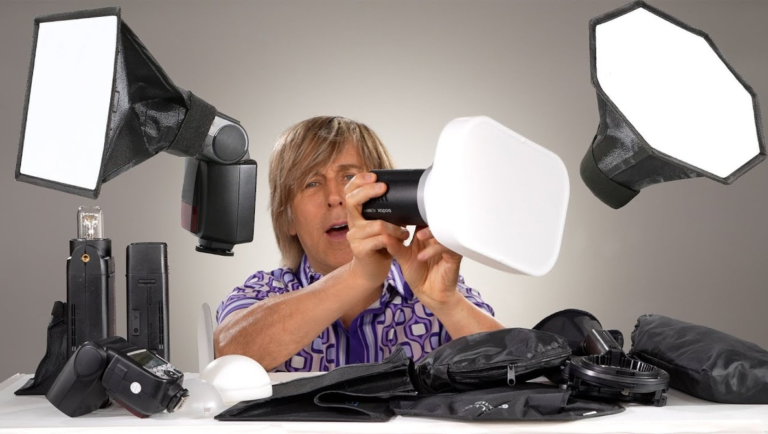Creating flattering light with a portable flash can be tricky, especially when you’re on the move and don’t have room for bulky equipment. Whether you’re shooting at a wedding or just want a low-profile setup, finding the right diffuser to soften light without sacrificing portability is key.
Coming to you from Markus Rothkranz of MarkusPix, this informative video breaks down the effectiveness of various small flash diffusers and modifiers. One of the first things Rothkranz addresses is the misconception about dome diffusers. Many people think attaching a dome to their flash will produce soft light similar to a softbox. However, as Rothkranz demonstrates, this isn’t the case. A dome creates hard light unless you’re in a small room with white walls and low ceilings to bounce the light. Even then, the resulting overhead light can be unflattering. He makes it clear that while domes may look professional, they often fail to deliver on their promise of soft light.
Rothkranz moves on to another common tool: bounce cards. These modifiers are slightly more effective than domes but come with limitations. When used indoors, they rely heavily on ceiling and wall reflections to soften the light, which can result in uneven or overhead shadows. Outdoors, bounce cards lose their effectiveness almost entirely. For portability, they’re decent, but they don’t significantly improve the softness of your light. This leads to the next key point in the video—size matters. Rothkranz explains that the larger the light source, the softer the shadows.
One standout option discussed is the Godox AD-S7 softbox. Compact enough to fit in your pocket, this 17-inch softbox is a versatile solution for portable lighting. Paired with a bare-bulb flash like the Godox AD200, it provides a much softer light than domes or cards.
Rothkranz points out that some silicone diffusers, while innovative and lightweight, scatter light in all directions like a light bulb. This can be beneficial in small, enclosed spaces but wastes light outdoors. For a truly directional and controlled approach, he prefers softboxes that force light forward, giving you better control over how it interacts with your subject. Check out the video above for the full rundown from Rothkranz.
